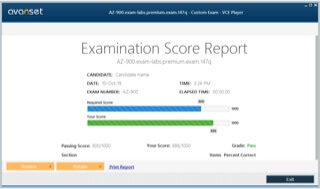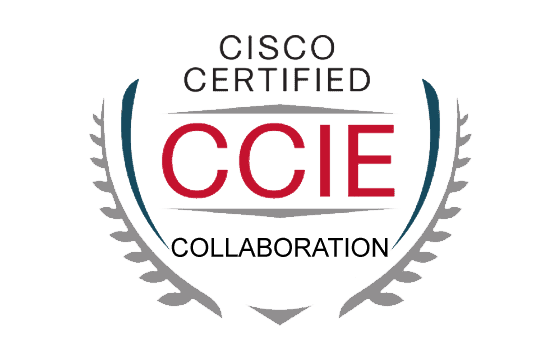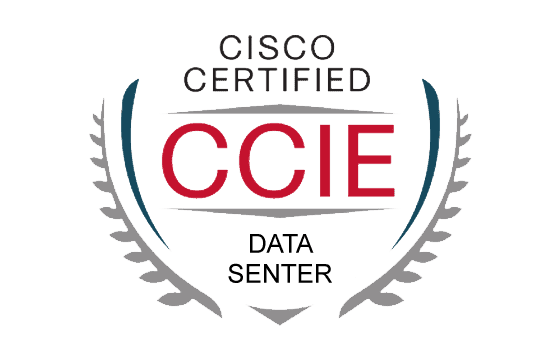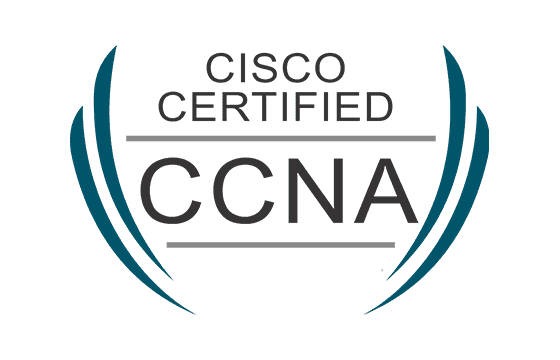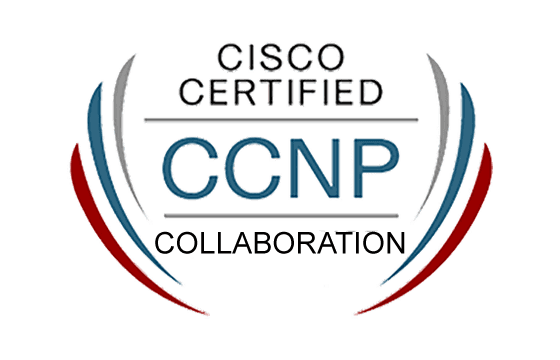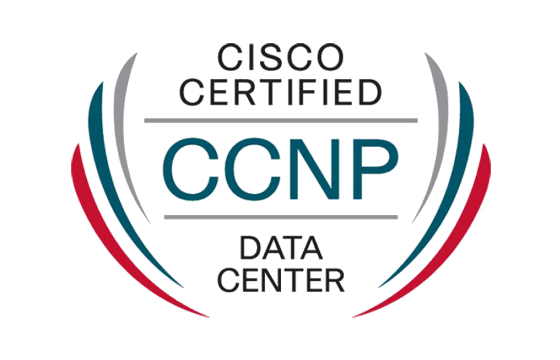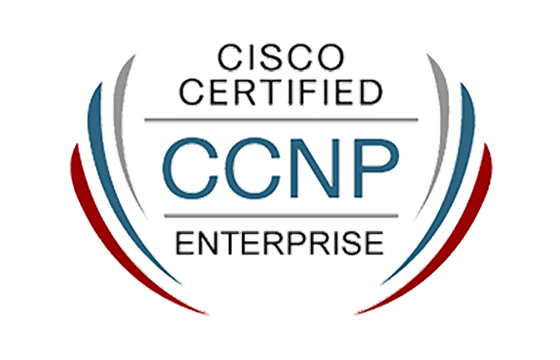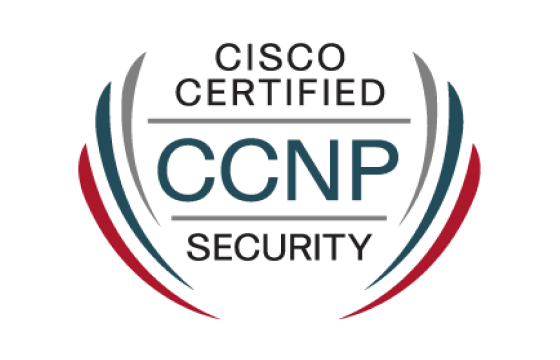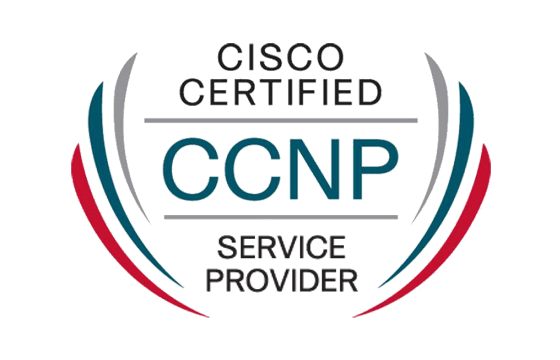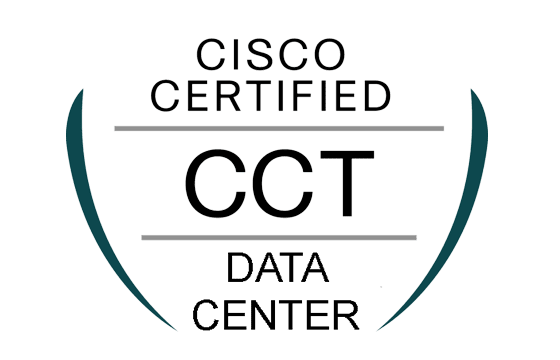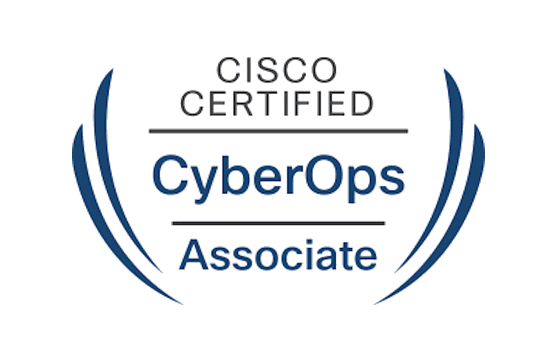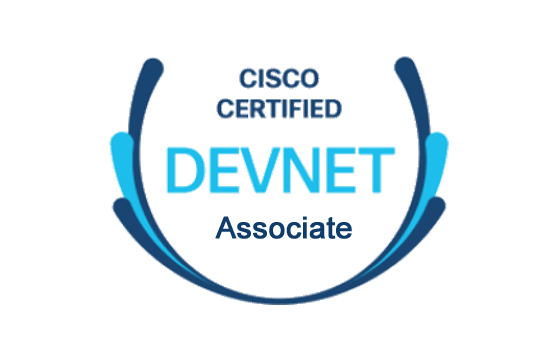Pass Your Cisco 640-802 Exam Easy!
Cisco 640-802 Exam Questions & Answers, Accurate & Verified By IT Experts
Instant Download, Free Fast Updates, 99.6% Pass Rate
This exam was replaced by Cisco with 200-120 exam
Archived VCE files
| File | Votes | Size | Date |
|---|---|---|---|
File Cisco.Acme.640-802.CCNA.v2013-08-06.by.Acme.649q.vce |
Votes 273 |
Size 16.23 MB |
Date Aug 05, 2013 |
File Cisco.ActualTests.640-802.v2013-01-28.by.Spike.662q.vce |
Votes 65 |
Size 31.72 MB |
Date Jan 31, 2013 |
File Cisco.ActualTests.640-802.v2012-12-18.by.Acme.676q.vce |
Votes 1 |
Size 31.26 MB |
Date Dec 19, 2012 |
File Cisco.ActualTest.640-802.v2012-07-26.636q.vce |
Votes 1 |
Size 29.36 MB |
Date Dec 02, 2012 |
File Cisco.Acme.640-802.v2012-01-21.by.Jericho.576q.vce |
Votes 1 |
Size 22.55 MB |
Date Jan 26, 2012 |
File Cisco.Pass4Sure.640-802.v2010-12-24.665q.vce |
Votes 1 |
Size 17.46 MB |
Date Jan 16, 2011 |
File Cisco.Pass4sure.640-802.v2010-12-23.by.RamkiranVJ.356q.vce |
Votes 1 |
Size 24.91 MB |
Date Dec 23, 2010 |
File Cisco.TestInside.640-802.v2010-05-16.346q.vce |
Votes 1 |
Size 24.12 MB |
Date Sep 05, 2010 |
File Cisco.SelfTestEngine.640-802.v13.02.by.Max.184q.vce |
Votes 1 |
Size 17.36 MB |
Date Sep 22, 2009 |
File Cisco.Pass4sure.640-802.v2009-03-06.by.Syva.503q.vce |
Votes 1 |
Size 13.27 MB |
Date May 04, 2009 |
Cisco 640-802 Practice Test Questions, Exam Dumps
Cisco 640-802 (Cisco Certified Network Associate (CCNA 640-802)) exam dumps vce, practice test questions, study guide & video training course to study and pass quickly and easily. Cisco 640-802 Cisco Certified Network Associate (CCNA 640-802) exam dumps & practice test questions and answers. You need avanset vce exam simulator in order to study the Cisco 640-802 certification exam dumps & Cisco 640-802 practice test questions in vce format.
A Foundational Guide to the Cisco 640-802 Exam and Core Networking Principles
The journey into network engineering for many professionals began with the pursuit of a Cisco certification. For a significant period, the pinnacle of entry-level networking was the Cisco Certified Network Associate, or CCNA, certification. The primary path to achieving this credential was by passing the 640-802 Exam. While this specific exam code has since been retired and replaced by newer versions, the foundational knowledge it tested remains timeless and essential. Understanding the principles covered in the 640-802 Exam is akin to studying the roots of modern networking, providing a robust base upon which all future knowledge is built.
This series will delve into the core concepts that were central to the 640-802 Exam. We will explore the theoretical models that govern data communication, the hardware that builds our networks, and the initial steps required to configure and manage these devices. For those new to the field or those looking to solidify their understanding of the fundamentals, this exploration serves as a comprehensive guide. It revisits the curriculum that shaped a generation of network engineers, highlighting why these topics are still critically relevant in today's complex and ever-evolving digital landscape.
Understanding the Legacy of the 640-802 Exam
The 640-802 Exam was the composite test for the CCNA certification. This meant it covered a broad range of topics that could also be taken as two separate exams: ICND1 and ICND2. By passing the single 640-802 Exam, candidates demonstrated their proficiency in installing, operating, and troubleshooting small to medium-sized enterprise branch networks. The certification validated a professional's ability to manage switched and routed networks, implement IP addressing schemes, and understand fundamental network security concepts. It was a benchmark that signified a solid understanding of networking theory and practical hands-on skills with Cisco equipment.
Achieving success on the 640-802 Exam was a significant accomplishment. It required dedicated study and extensive lab practice. The exam curriculum was designed to ensure that certified individuals were not just familiar with terminology but could actively configure and diagnose network issues. This emphasis on practical application is what made the CCNA certification so valuable to employers. The 640-802 Exam served as a gatekeeper, ensuring that only those with a genuine grasp of the material could earn the coveted CCNA title and embark on a professional career in network administration and engineering.
The retirement of the 640-802 Exam did not diminish the value of its curriculum. Instead, the topics were evolved and integrated into subsequent versions of the CCNA certification. Concepts like the OSI model, IP subnetting, VLANs, and routing protocols such as OSPF and EIGRP are as important today as they were then. Studying the structure of the 640-802 Exam provides a clear and logical pathway to learning networking from the ground up. It offers a structured approach that begins with the basics and progressively builds towards more complex, real-world scenarios, making it an excellent educational framework.
The OSI and TCP/IP Models in the 640-802 Exam
A core component of the 640-802 Exam was a thorough understanding of networking models, specifically the Open Systems Interconnection (OSI) model and the TCP/IP model. The OSI model is a conceptual framework that standardizes the functions of a telecommunication or computing system into seven distinct layers. These layers, from bottom to top, are the Physical, Data Link, Network, Transport, Session, Presentation, and Application layers. Each layer serves a specific function and communicates with the layers directly above and below it. For the exam, knowing the purpose of each layer was crucial for troubleshooting.
For example, if a user could not access a website, a network engineer trained for the 640-802 Exam would mentally work through the OSI model. Is there a physical connection (Layer 1)? Is the device getting a valid MAC address and communicating on the local network (Layer 2)? Does the device have a correct IP address and can it reach the gateway (Layer 3)? Is a firewall blocking the necessary TCP port (Layer 4)? This layered approach provides a systematic method for diagnosing problems, which is an indispensable skill for any network professional.
The TCP/IP model, also known as the Internet Protocol Suite, is a more practical model that directly corresponds to the protocols used on the internet. It is often described with four layers: Network Interface (or Link), Internet, Transport, and Application. The 640-802 Exam required candidates to map the functions of these layers to the seven layers of the OSI model. For instance, the TCP/IP Application layer encompasses the functions of the OSI Application, Presentation, and Session layers. Understanding both models and their relationship was fundamental to grasping how data moves through a network.
Data encapsulation is the process by which data is wrapped with protocol information at each layer of the OSI model. As data moves down the stack from the Application layer, each layer adds its own header (and sometimes a trailer) containing control information. This unit of data is called a Protocol Data Unit (PDU). The PDU has a specific name at different layers: it's data at the upper layers, a segment at the Transport layer, a packet at the Network layer, a frame at the Data Link layer, and bits at the Physical layer. The 640-802 Exam stressed this concept heavily.
Exploring Network Devices and Topologies
The 640-802 Exam curriculum thoroughly covered the roles of various network devices. At the most basic level are hubs, which operate at Layer 1 (Physical) of the OSI model. A hub is a simple device that receives a signal on one port and regenerates and broadcasts it out to all other ports. This creates a single collision domain, meaning if two devices try to send data at the same time, a collision occurs and the data must be retransmitted. Hubs are now considered obsolete primarily due to their inefficiency and have been replaced by more intelligent devices.
Switches are a significant improvement over hubs and were a central topic in the 640-802 Exam. Switches operate at Layer 2 (Data Link) and make forwarding decisions based on MAC addresses. A switch learns which MAC addresses are connected to which of its ports and creates a MAC address table. When a frame arrives, the switch looks at the destination MAC address and forwards the frame only to the port connected to that destination device. Each port on a switch is its own collision domain, dramatically improving network performance over a hub-based network.
Routers are essential devices that operate at Layer 3 (Network) of the OSI model. The primary function of a router is to connect different networks and forward packets between them based on IP addresses. Routers use a routing table to determine the best path to a destination network. Unlike switches that operate within a single broadcast domain by default, routers block broadcasts. This segmentation is crucial for managing traffic and improving the performance and security of a network. The 640-802 Exam required extensive knowledge of router configuration and operation.
Network topologies describe the physical or logical arrangement of a network. The 640-802 Exam covered common topologies like bus, ring, and star. The star topology is the most prevalent in modern LANs, where all devices connect to a central device like a switch. Extended star or hierarchical topologies are used to build larger, scalable networks, typically with a core layer, distribution layer, and access layer of switches. Understanding these designs is key to planning and implementing a reliable and efficient network infrastructure, a skill tested directly and indirectly in the exam.
Fundamentals of Ethernet and Data Encapsulation
Ethernet is the dominant technology used in local area networks (LANs) today, and it was a fundamental topic for the 640-802 Exam. It defines the standards for wiring and signaling at the Physical and Data Link layers of the OSI model. At the Data Link layer, Ethernet is responsible for formatting data into a structure called a frame. The Ethernet frame includes several important fields, most notably the source and destination MAC addresses, which are 48-bit addresses hardcoded into a device's network interface card (NIC). These addresses are used for communication within the local network segment.
The process of data encapsulation is critical to understanding how networks function. When an application sends data, it is passed down the protocol stack. At the Transport layer, it is broken into segments, and a TCP or UDP header is added. At the Network layer, an IP header containing source and destination IP addresses is added, creating a packet. Finally, at the Data Link layer, a frame header and trailer are added. This frame, containing the MAC addresses, is then converted into bits and sent over the physical medium like a copper or fiber optic cable.
A key concept associated with early Ethernet networks was Carrier Sense Multiple Access with Collision Detection (CSMA/CD). This was the method used in hub-based or coaxial cable networks to manage shared bandwidth. A device would first listen (carrier sense) to see if the line was busy. If it was clear, it would transmit. Since multiple devices (multiple access) might transmit at the same time, collisions could occur. If a collision was detected (collision detection), all devices would back off for a random amount of time before trying to retransmit. Modern switched networks largely eliminate this issue.
In a switched environment, each port provides a dedicated connection, and devices can operate in full-duplex mode, meaning they can send and receive data simultaneously. This effectively eliminates collisions, as there is no contention for the media. However, understanding the historical context of CSMA/CD was important for the 640-802 Exam as it provides insight into why switched networks are designed the way they are. The transition from shared media to a switched infrastructure was a pivotal moment in the evolution of networking, leading to the high-speed, reliable LANs we use today.
Cisco IOS: The Core of Network Management
A major part of preparing for the 640-802 Exam involved hands-on experience with the Cisco Internetwork Operating System (IOS). This is the software that runs on the vast majority of Cisco routers and switches. Unlike graphical user interface (GUI) based systems, network professionals primarily interact with Cisco IOS through a command-line interface (CLI). The CLI is powerful, efficient, and provides granular control over every aspect of the device's operation. Gaining proficiency with the CLI was, and still is, a rite of passage for any aspiring network engineer.
The Cisco IOS CLI has several distinct access modes. The first mode a user enters is the user EXEC mode, identified by a > prompt. This mode is very limited and is primarily used for basic monitoring. By typing the enable command, the user can enter privileged EXEC mode, indicated by a # prompt. This mode provides access to all monitoring commands as well as commands for testing and file management. It is the gateway to making configuration changes to the device. The 640-802 Exam required candidates to be fluent in navigating these modes.
To make changes to the device's running configuration, one must enter the global configuration mode by typing configure terminal from privileged EXEC mode. The prompt changes to (config)#, indicating that the user can now modify global settings. From here, one can move into more specific configuration modes, such as interface configuration mode to configure a specific network port, or line configuration mode to secure access to the device. Understanding this hierarchical structure is essential for efficient and accurate configuration of Cisco devices.
The show command is one of the most powerful tools in Cisco IOS. Used in privileged EXEC mode, it allows the administrator to view a vast amount of information about the device's status and configuration. For example, show running-config displays the current configuration in memory, show ip interface brief provides a summary of the status of all interfaces, and show mac address-table displays the MAC addresses learned by a switch. Mastering various show commands was a critical skill for verification and troubleshooting scenarios presented in the 640-802 Exam.
Initial Device Configuration and Management
The 640-802 Exam tested a candidate's ability to perform an initial setup on a brand new Cisco router or switch. This process involves a series of fundamental steps to make the device identifiable on the network and secure it from unauthorized access. One of the very first commands is to set a unique hostname for the device using the hostname [name] command in global configuration mode. This simple step is vital, as it helps administrators easily identify which device they are connected to, preventing accidental configuration on the wrong machine.
Securing access to the device is paramount. The 640-802 Exam emphasized configuring several layers of passwords. The enable secret [password] command is used to set an encrypted password for accessing privileged EXEC mode. Additionally, passwords should be set on the console line and the virtual terminal (VTY) lines. The console line is used for direct physical access, while VTY lines are used for remote access via Telnet or SSH. Securing these lines helps ensure that only authorized personnel can manage the network equipment. It is also a best practice to encrypt all plain-text passwords using the service password-encryption command.
Another basic configuration step is setting a message of the day (MOTD) banner. This is accomplished with the banner motd #[message]# command. The banner is displayed to anyone who attempts to log in to the device. Typically, this message is used to display legal notices or warnings against unauthorized access, adding another layer of security and policy enforcement. While a simple feature, it is considered a standard part of hardening a network device, and its configuration was expected knowledge for the 640-802 Exam.
Once the initial configuration is complete, it is crucial to save the changes. The commands entered in configuration mode modify the running-config file, which is stored in the device's volatile memory (RAM). If the device loses power, this configuration will be lost. To save the configuration permanently, the copy running-config startup-config command must be executed from privileged EXEC mode. This copies the active configuration to the startup-config file, which is stored in non-volatile RAM (NVRAM), ensuring the configuration persists through a reboot. This simple yet critical step was a frequent point of failure for exam newcomers.
Why These Fundamentals Still Matter Today
Although the 640-802 Exam itself is a piece of networking history, the knowledge it represents is far from obsolete. The principles of data communication, the functions of network devices, and the logic of IP addressing are the bedrock of all modern networking. Whether you are working with cloud infrastructure, wireless networks, or advanced cybersecurity systems, the journey of a data packet from source to destination still follows the fundamental rules covered in the classic CCNA curriculum. A strong grasp of these basics is what separates a great engineer from a good one.
The systematic troubleshooting methodology taught through the OSI model is a timeless skill. When faced with a complex network outage, the ability to logically isolate the problem layer by layer is invaluable. This structured approach prevents guesswork and leads to faster resolution times. The commands and configuration principles learned for the 640-802 Exam, while specific to Cisco IOS, teach a syntax and logic that is transferable to many other network operating systems. The core concepts of configuring interfaces, setting up routing, and securing devices remain consistent across different vendors.
Furthermore, technologies that have replaced older ones often build upon the same underlying principles. For example, while Frame Relay is rarely seen today, understanding it helps in grasping the concepts behind modern MPLS and SD-WAN technologies. Similarly, the deep knowledge of subnetting required for the 640-802 Exam is directly applicable to designing IP address schemes in large-scale cloud environments or segmenting networks for security purposes. The foundational knowledge is the toolkit that allows a professional to adapt to new technologies as they emerge.
In conclusion, studying the topics of the 640-802 Exam is not about preparing for an outdated test. It is about building a comprehensive and deep-rooted understanding of how networks work. This foundation provides the context needed to understand more advanced topics and to troubleshoot complex problems effectively. For anyone starting their networking journey, revisiting these core principles is one of the most valuable investments they can make in their career. The legacy of the 640-802 Exam is the strong foundation it provided for countless networking professionals around the world.
Mastering LAN Switching for the 640-802 Exam
Local Area Network (LAN) switching is the technology that forms the backbone of nearly every enterprise network. It provides the essential connectivity for end-user devices, servers, and other network equipment within a single location. For the 640-802 Exam, a deep and practical understanding of Layer 2 switching was absolutely critical. This domain of knowledge went far beyond simply knowing what a switch does; it required candidates to be proficient in configuring, managing, and troubleshooting a switched environment. The skills tested were foundational for building stable, scalable, and secure networks.
This part of our series will focus entirely on the switching concepts and configurations that were integral to the 640-802 Exam. We will explore how switches build their MAC address tables, the power of segmenting networks using Virtual LANs (VLANs), and the protocols that prevent catastrophic network loops. Furthermore, we will delve into the methods for securing switch ports and enabling communication between different VLANs. The principles covered here are not merely historical footnotes; they are active, daily-use skills for any network administrator or engineer working with modern network infrastructure.
The Role of LAN Switching in the 640-802 Exam
The 640-802 Exam placed a heavy emphasis on LAN switching because it is the fundamental building block of local network connectivity. The core function of a switch is to forward Ethernet frames between devices on the same network. It operates at Layer 2 of the OSI model, making its decisions based on MAC addresses. When a switch is first powered on, its MAC address table is empty. It learns the MAC addresses of connected devices by inspecting the source MAC address of every frame it receives. It then populates its table with this address and the port it was received on.
This learning process allows the switch to make intelligent forwarding decisions. When a frame arrives with a destination MAC address that is in its table, the switch forwards the frame only to the corresponding port. This is a vast improvement over old network hubs, which would forward the frame out of every port. By forwarding frames only where they need to go, a switch creates individual collision domains for each port. This significantly reduces network congestion and increases available bandwidth for each device, a concept frequently tested in the 640-802 Exam.
If a switch receives a frame with a destination MAC address that is not in its table, it will flood the frame out of all ports except the one it came in on. This is how it ensures the frame reaches its destination, assuming the destination is on the network. Similarly, if a frame is destined for the broadcast MAC address (FF:FF:FF:FF:FF:FF), the switch will also flood it out of all ports. By default, an entire switched network forms a single broadcast domain. Uncontrolled broadcasts can severely degrade network performance, which leads to the need for network segmentation.
Understanding the distinction between collision domains and broadcast domains was crucial for the 640-802 Exam. A collision domain is a network segment where data packets can collide with one another. Each port on a switch is a separate collision domain. A broadcast domain is a logical division of a computer network, in which all nodes can reach each other by broadcast at the data link layer. By default, all ports on a switch are in the same broadcast domain. Controlling the size of broadcast domains is a key aspect of network design, and the primary tool for this is the VLAN.
Understanding VLANs and Trunks
Virtual LANs, or VLANs, are a core technology that was extensively covered in the 640-802 Exam. A VLAN is a logical grouping of network devices that can be segmented as if they were on separate physical networks, even though they may be connected to the same switch. This is a powerful tool for network administrators. For example, you could create separate VLANs for the Engineering, Sales, and Marketing departments. Devices in the Engineering VLAN can communicate freely with each other, but they cannot communicate directly with devices in the Sales VLAN. This segmentation improves security and network management.
By creating VLANs, you are effectively breaking up a large broadcast domain into multiple smaller ones. A broadcast frame sent by a device in one VLAN will only be forwarded to other devices within that same VLAN. This reduces unnecessary traffic and improves the overall performance of the network. Each VLAN is its own logical network, and for a device in one VLAN to communicate with a device in another, the traffic must be routed by a Layer 3 device, such as a router or a multilayer switch. The 640-802 Exam required candidates to know how to create and manage these logical boundaries.
When you have multiple switches in your network, you need a way for VLAN traffic to travel between them. This is accomplished using a trunk link. A trunk is a point-to-point link that can carry traffic for multiple VLANs simultaneously. The industry standard protocol for trunking is IEEE 802.1Q. When an Ethernet frame is sent across a trunk link, an extra 4-byte "tag" is inserted into the frame header. This tag contains the VLAN ID, which tells the receiving switch which VLAN the frame belongs to. This process allows a single physical connection to support many logical networks.
One special VLAN is the native VLAN. For an 802.1Q trunk, traffic for the native VLAN is not tagged. This was designed for backward compatibility with older devices that did not understand VLAN tags. It is a security best practice to change the native VLAN from the default of VLAN 1 to an unused VLAN ID. It is also critical that the native VLAN configuration matches on both ends of a trunk link. A native VLAN mismatch can cause connectivity issues and was a common troubleshooting scenario in the 640-802 Exam.
Configuring and Verifying VLANs
A significant portion of the hands-on lab simulations in the 640-802 Exam involved configuring and verifying VLANs and trunks on Cisco switches. To create a VLAN, you use the vlan [vlan-id] command from global configuration mode. This creates the VLAN in the switch's VLAN database. You can then give it a descriptive name using the name [vlan-name] command. For example, to create VLAN 10 for the Sales department, you would enter vlan 10 followed by name Sales. This process is simple but fundamental to building a segmented network.
Once a VLAN is created, you need to assign switch ports to it. These ports are called access ports. An access port belongs to and carries traffic for only one VLAN. To assign a port to a VLAN, you first enter interface configuration mode for that port, for example, interface FastEthernet0/1. Then, you use the switchport mode access command to define it as an access port, followed by switchport access vlan [vlan-id] to assign it to the desired VLAN. For instance, switchport access vlan 10 would place the FastEthernet0/1 port into the Sales VLAN.
To configure a trunk link between switches, you again enter the interface configuration mode for the port you wish to use. The command switchport mode trunk sets the port to be an unconditional trunk. You can also control which VLANs are allowed to cross the trunk using the switchport trunk allowed vlan [vlan-list] command. For example, switchport trunk allowed vlan 10,20,30 would only permit traffic from those three VLANs to traverse the link. This provides granular control over the network traffic flow.
Verification is just as important as configuration. The 640-802 Exam required candidates to be proficient with show commands to verify their work and troubleshoot problems. The show vlan brief command is essential as it displays a list of all configured VLANs and which ports are assigned to them. To check the status of a trunk, the show interfaces trunk command is used. This command provides vital information, including the port's mode, its native VLAN, and the list of active VLANs allowed on the trunk, making it an invaluable tool for network administrators.
The Spanning Tree Protocol (STP) Explained
While having redundant links between switches creates fault tolerance, it also introduces a dangerous problem: Layer 2 loops. If there is a loop in a switched network, broadcast frames will be forwarded endlessly, creating a broadcast storm that can quickly consume all available bandwidth and CPU resources on the switches, bringing the entire network to a halt. The 640-802 Exam required a deep understanding of the Spanning Tree Protocol (STP), which is the mechanism designed to prevent these loops. STP ensures a loop-free topology by logically blocking redundant paths.
STP works by electing a single switch in the network to be the Root Bridge. This election is based on the Bridge ID, which is a combination of a priority value and the switch's MAC address. The switch with the lowest Bridge ID wins the election and becomes the Root Bridge. All other switches in the network then calculate their single best path to get to the Root Bridge. This path is determined by the cumulative cost of the links, where lower-speed links have a higher cost. The port that represents the best path to the root is called the Root Port.
On each network segment, there must be only one port that is allowed to forward traffic toward the Root Bridge. This port is called the Designated Port. The switch on the segment with the lower-cost path to the root will have its port designated. All other ports that could create a loop are put into a blocking state. A port in the blocking state does not forward any data frames, which effectively breaks the loop. It will, however, continue to listen to STP messages, known as Bridge Protocol Data Units (BPDUs), so it can react if the network topology changes.
The 640-802 Exam tested knowledge of the different STP port states. Besides blocking, a port can be in a listening, learning, or forwarding state. When a port is first activated or the topology changes, it transitions through these states. It first listens for BPDUs to determine its role in the spanning tree, then it learns MAC addresses without forwarding data, and finally, it enters the forwarding state where it operates normally. This process can take up to 50 seconds, a convergence time that was a significant drawback of the original STP standard.
Exploring Rapid Spanning Tree Protocol (RSTP)
The slow convergence time of the original Spanning Tree Protocol (IEEE 802.1D) was a major issue in modern networks. A 30 to 50-second network outage every time a link state changed was unacceptable. To address this, the Rapid Spanning Tree Protocol (RSTP), or IEEE 802.1w, was developed. RSTP was an important topic in the 640-802 Exam as it represented the evolution of loop prevention. Its primary advantage is its ability to achieve convergence in a matter of seconds, and in many cases, sub-second.
RSTP achieves its speed by optimizing the original STP process. It combines the blocking, listening, and disabled states of STP into a single discarding state. The port roles are similar, with Root and Designated ports, but RSTP introduces the Alternate and Backup port roles. An Alternate port is a port that has a redundant path to the Root Bridge but is currently in a discarding state. If the Root Port fails, the Alternate port can immediately transition to the forwarding state without waiting for timers to expire, which dramatically speeds up failover.
Another key enhancement in RSTP is the concept of port types, specifically edge ports. A port that is connected to an end device like a PC or a server can be configured as an edge port (a feature known as PortFast in Cisco's implementation). These ports do not participate in the STP recalculation process. When an edge port comes up, it can immediately transition to the forwarding state, skipping the listening and learning phases. This allows end devices to get network connectivity almost instantly, without the risk of creating a switching loop.
The 640-802 Exam required candidates to understand the differences between STP and RSTP and how to configure features like PortFast. Enabling PortFast is a simple but highly effective optimization. It is done on a per-interface basis with the spanning-tree portfast command. It is crucial to only enable this feature on ports connected to host devices. If PortFast is enabled on a port connected to another switch, it could create a temporary loop that could disrupt the network. To mitigate this risk, it is often used in conjunction with BPDU Guard.
Securing the Switched Network
Network security begins at the access layer, and the 640-802 Exam covered fundamental switch security features, with port security being the most prominent. Port security is a Layer 2 feature that allows an administrator to restrict a switch port's usage to a specific MAC address or a specific number of MAC addresses. This is a powerful tool to prevent unauthorized devices from connecting to the network. If an unauthorized device plugs into a port with port security enabled, the switch can be configured to take a specific action.
There are several ways to configure MAC addresses for port security. You can statically configure the specific MAC address that is allowed on the port. You can also configure the switch to dynamically learn the first MAC address it sees and "stick" it to the port's configuration. This is known as sticky learning. The most common configuration is to set a maximum number of allowed MAC addresses on a port, for instance, a maximum of one, and let the switch learn the MAC address of the first device that connects.
When a violation occurs, meaning an unauthorized MAC address attempts to use the port, the switch will take action based on its configured violation mode. The three violation modes tested in the 640-802 Exam were shutdown, restrict, and protect. In shutdown mode, which is the default, the port is immediately disabled and a log message is sent. The port must be manually re-enabled by an administrator. In restrict mode, the port drops packets from the unauthorized MAC address and sends a log message. In protect mode, it simply drops the packets without logging the event.
Implementing port security is a straightforward but highly effective security measure. The configuration starts by enabling the feature on an interface with the switchport port-security command. Then, you can set the maximum number of addresses and the violation mode using subsequent commands. For example, switchport port-security maximum 1 and switchport port-security violation shutdown. Verifying the configuration with show port-security interface [interface-id] was a key skill for the 640-802 Exam, as it shows the status of the port and any learned secure addresses.
Inter-VLAN Routing Essentials
As discussed earlier, VLANs segment a network into separate broadcast domains. By design, devices in one VLAN cannot communicate with devices in another. However, in most enterprise networks, this communication is necessary. For example, a user in the Sales VLAN might need to access a server in the Engineering VLAN. To enable this communication, traffic must be passed through a Layer 3 device. This process is called inter-VLAN routing, and it was a critical topic in the 640-802 Exam. A router or a multilayer switch can perform this function.
A common and classic method for inter-VLAN routing, especially for the 640-802 Exam, is called "Router on a Stick" (ROAS). This configuration uses a single physical interface on a router to route traffic for multiple VLANs. This is achieved by creating logical subinterfaces on the router's physical interface, one for each VLAN. The link between the router and the switch is configured as a trunk link, allowing it to carry traffic for all the necessary VLANs. This is a cost-effective solution when you don't have a Layer 3 switch.
To configure ROAS, you first set up the trunk port on the switch connected to the router. On the router, you configure subinterfaces on the physical interface. For example, for interface GigabitEthernet0/1, you would create subinterfaces like GigabitEthernet0/1.10 for VLAN 10 and GigabitEthernet0/1.20 for VLAN 20. Each subinterface must be configured with two key commands. First, encapsulation dot1q [vlan-id] tells the router which VLAN tag to use. Second, ip address [ip-address] [subnet-mask] assigns an IP address to the subinterface, which will serve as the default gateway for devices in that VLAN.
Once configured, the routing process is straightforward. A host in VLAN 10 wanting to communicate with a host in VLAN 20 sends its traffic to its default gateway, which is the IP address of the router's VLAN 10 subinterface. The router receives the tagged frame, removes the tag, and sees that the destination IP address is in the network of VLAN 20. It then looks at its routing table, adds a VLAN 20 tag to the packet, and forwards it back out the same physical interface to the switch. The switch then forwards the frame to the destination host in VLAN 20.
Troubleshooting Common Switching Issues
The 640-802 Exam was not just about configuration; it heavily tested troubleshooting skills. In a switched environment, many issues can arise, and a network engineer must be able to diagnose them quickly. One of the most common problems is a VLAN or trunking mismatch. For a trunk to work, the settings on both ends of the link must be compatible. This includes the trunking mode (e.g., both set to trunk) and, crucially, the native VLAN. A native VLAN mismatch will cause unpredictable behavior and can lead to connectivity loss for certain VLANs.
Spanning Tree Protocol issues can also be challenging to troubleshoot. If the network is experiencing intermittent connectivity or is extremely slow, it could be the sign of a broadcast storm caused by a switching loop. This can happen if STP is not configured correctly or if a port that should be blocking is erroneously forwarding frames. Using commands like show spanning-tree can help identify the Root Bridge and the state of each port. Unusually high CPU utilization on switches is another strong indicator of a potential loop.
Port configuration errors are another frequent source of problems. For example, a port might be assigned to the wrong VLAN, preventing a device from communicating with the resources it needs. Or a port might be in a shutdown state due to a port security violation. The show interfaces status and show run interface [interface-id] commands are invaluable for quickly checking a port's status, VLAN assignment, and other configuration details. A systematic approach, starting from the physical layer and moving up, is key to resolving these issues effectively.
Finally, inter-VLAN routing problems often stem from misconfigurations on the router or the switch. The default gateway on the host devices must be set to the correct IP address of the router's subinterface for that VLAN. The trunk link between the switch and router must be configured correctly, allowing the necessary VLANs. Using ping from a host to its default gateway is the first step in troubleshooting. If that fails, checking the IP configuration on the router's subinterfaces and the trunk configuration on both devices is the next logical step. These skills were essential for success in the 640-802 Exam.
Demystifying IP Addressing and Subnetting for the 640-802 Exam
At the heart of every network communication lies the Internet Protocol (IP). IP addressing is the system that gives every device on a network a unique logical address, allowing data packets to be routed from a source to a destination across different networks. For any aspiring network professional, and especially for candidates of the 640-802 Exam, mastering IP addressing and the art of subnetting was non-negotiable. This topic was one of the most heavily weighted and challenging components of the exam, often being the differentiator between a pass and a fail.
This part of the series is dedicated to breaking down the complexities of IP addressing as it was covered in the 640-802 Exam. We will start with the fundamentals of the IPv4 address structure and then dive deep into the crucial skill of subnetting, which allows for the efficient division and management of network address space. We will also explore more advanced concepts like Variable Length Subnet Masking (VLSM) and route summarization. Finally, we will introduce IPv6, the next generation of IP addressing, and cover the practical aspects of configuring and troubleshooting IP on Cisco devices.
The Criticality of IP Addressing in the 640-802 Exam
Success on the 640-802 Exam was impossible without a rock-solid understanding of IP addressing. This knowledge domain formed the basis for a multitude of other topics on the exam blueprint, including routing, access control lists (ACLs), and Network Address Translation (NAT). Questions related to IP addressing were not just direct "what is" queries; they were woven into complex troubleshooting scenarios and practical lab simulations. Candidates were expected to quickly calculate subnet ranges, identify valid host addresses, and design efficient addressing schemes under pressure.
The exam required proficiency in both binary and dotted-decimal notation. An IP address is a 32-bit binary number, but for human readability, it is represented as four decimal numbers (octets) separated by dots. The ability to convert between these two formats swiftly and accurately was a fundamental skill. This binary understanding is the key to unlocking the logic behind subnet masks and the process of subnetting. Without it, a candidate would be merely memorizing patterns rather than truly understanding how networks are logically divided and how routers make their forwarding decisions.
Furthermore, the 640-802 Exam tested not just the "how" but also the "why" of IP addressing. This included understanding the difference between public and private IP addresses as defined in RFC 1918. Private addresses (like 10.0.0.0/8, 172.16.0.0/12, and 192.168.0.0/16) are used within internal networks and are not routable on the public internet. This concept is the foundation for technologies like NAT, which allows thousands of devices using private addresses to access the internet through a small number of public addresses. This efficient use of address space is a critical aspect of network design.
The pressure of the timed exam environment made speed and accuracy in IP calculations essential. Many successful candidates developed techniques and shortcuts for subnetting quickly, whether it was by memorizing powers of two, using charts, or practicing until the calculations became second nature. The 640-802 Exam ensured that certified individuals were not just familiar with IP addressing but were truly fluent in its language, capable of applying it to solve real-world networking challenges. This fluency remains a hallmark of a competent network engineer today.
IPv4 Address Structure and Classes
The IPv4 address, as covered in the 640-802 Exam, is a 32-bit number. This 32-bit space is divided into two parts: the network portion and the host portion. The network portion identifies the specific network the device belongs to, while the host portion identifies the specific device on that network. A router uses the network portion to forward a packet to the correct network, and then the final delivery to the host is handled within that local network. The subnet mask is a separate 32-bit number that is used to distinguish the network portion from the host portion of an IP address.
Historically, IPv4 addresses were divided into classes, a system known as classful addressing. The class of an address was determined by the value of its first octet. Class A addresses (1-126) used the first 8 bits for the network and the last 24 bits for hosts, allowing for a small number of very large networks. Class B addresses (128-191) used the first 16 bits for the network and 16 bits for hosts. Class C addresses (192-223) used the first 24 bits for the network and only 8 bits for hosts, allowing for many small networks.
While the concept of classful addressing is largely obsolete now in favor of classless addressing (CIDR), understanding it was important for the 640-802 Exam as it provides historical context and helps in understanding the default subnet masks. The default mask for a Class A network is 255.0.0.0, for Class B it is 255.255.0.0, and for Class C it is 255.255.255.0. In binary, a '1' in the subnet mask represents a network bit, and a '0' represents a host bit. This binary logic is the foundation of all subnetting.
The classful system was very inefficient. If you needed a network with 300 hosts, you had to be assigned a Class B address, which supported over 65,000 hosts. This wasted a vast number of IP addresses. This inefficiency led to the development of subnetting and later, Classless Inter-Domain Routing (CIDR), which ignores the class rules and allows the use of a prefix of any length to define the network portion of an address. This is the system used today, but the 640-802 Exam required knowledge of the classful origins to build a complete picture.
Go to testing centre with ease on our mind when you use Cisco 640-802 vce exam dumps, practice test questions and answers. Cisco 640-802 Cisco Certified Network Associate (CCNA 640-802) certification practice test questions and answers, study guide, exam dumps and video training course in vce format to help you study with ease. Prepare with confidence and study using Cisco 640-802 exam dumps & practice test questions and answers vce from ExamCollection.
Top Cisco Certification Exams
- 200-301
- 350-401
- 300-410
- 350-701
- 300-715
- 820-605
- 350-601
- 300-710
- 300-420
- 300-415
- 300-425
- 200-901
- 350-501
- 700-805
- 350-901
- 300-620
- 300-730
- 350-801
- 200-201
- 400-007
- 300-435
- 350-201
- 500-220
- 300-810
- 300-430
- 300-815
- 100-150
- 300-515
- 300-610
- 300-440
- 300-820
- 300-510
- 100-140
- 300-735
- 300-910
- 300-720
- 300-215
- 300-615
- 300-635
- 700-250
- 300-725
- 300-535
- 500-560
- 500-443
- 700-750
Site Search:



